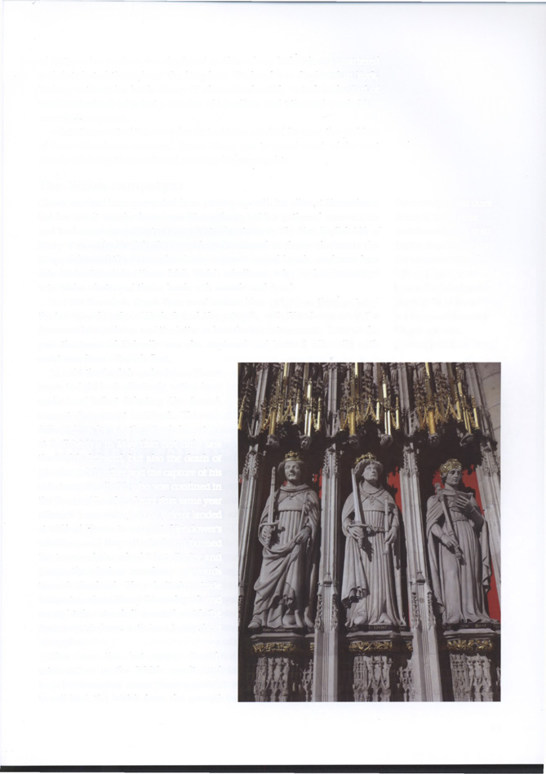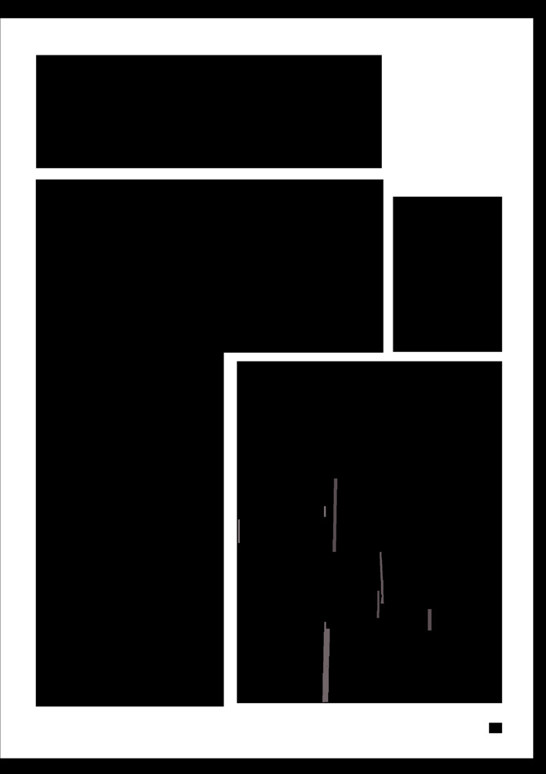Henry V: The Background, Strategies, Tactics and Battlefield Experiences of the Greatest Commanders of History Paperback (5 page)
Authors: Marcus Cowper
Tags: #Military History - Medieval

their work, but sent a shower of sharp points against their adversaries.'
(Copyright Dean and
Despite the arrow storm, Stafford's men came face to face with the Percy Chapter of Westminster)
line and were driven back, with the Earl of Stafford being killed in the process.
At this point, Henry IV led his main force forwards up the hill, while at the
same time summoning his son to attack the Percy flank.
11


With his men being overwhelmed by the Royal force, Hotspur decided on
a bold strike, launching a mounted charge of 30 men to strike straight into the
enemy and kill the leaders - most importantly the king:
Thenne was there a strong and an hard bataille, and meny were slayn on bothe
sides: and whanne sere Henry Percy saw his men faste slayn he pressid in to the
bataille with xxx men, and made a lane in the myddille of the ost til he cam
to the kyngis baner, and there he slow the erl of Stafford and ser Thomas Blount
and othir: and atte laste he was beset aboute and slayne, and anon his ost was
disparblid and fledde.
English Chronicle
Hotspur's attempt had failed. Although he had killed the royal standard-bearer,
Sir Walter Blount - who may well have been wearing a spare set of Henry IV's
armour - he himself had fallen and his force now broke apart under pressure
from Henry IV in the centre and Prince Henry on the flank.
In the course of this action, Prince Henry himself was severely wounded
in the face by an arrow, as described by his biographer in
The First English Life
of Henry V:
Wherein the courage and strength of the younge Prince Henrie appeared
maruelouslie excellent; for in the same bataille, as he with a feruent mynde
fought (peraduenture unwarelie) amongst the rebbeles, he was wounded in the
face wth an arrowe, so sore that they that they present wth him were in despaire
of his life, wherefore they pained them to with drawe him from the bataille.
But that noble Prince, perceauinge theire intent gaue to them this aunswere:
'With what stomacke,' saide he, 'shall our people fight, when they see me theire
Prince and the Kings sonn withdrawe my selfe, and recoile for feare. Bringe me
therefore wounded as I ame amongest the first and the formost of our partie,
that not only by words but also by deeds I may enforce the courage of our men,
as it becommeth a Prince for to doe.
This was a major wound and it took the king's surgeon, John Bradmore,
to cure it through devising a patent machine for extracting the arrowhead
and then a 20-day course of ointments and cleansing to ensure that the
prince did not die of any post-operative infection. However, it must have left
a major scar and been a permanent reminder to the prince of the power and
effect of massed archers on the battlefield.
The battle itself could have caused as many as 5,000 casualties. Adam of Usk
places the number much higher in his chronicle: This battle saw terrible
slaughter on both sides, leading to the loss of sixteen thousand lives, but in
the end it was the king who, having begun the assault, emerged as the victor.
Sad to say, this Sir Henry, the flower and glory of Christian knighthood, died
in the battle, as did his afore-mentioned uncle...'
The Earl of Worcester was not killed in the battle itself, but executed two
days later along with a number of other notable leaders of the revolt. The body
12


of Hotspur his nephew was displayed in Shrewsbury before being quartered
and distributed throughout the kingdom. His head was displayed in York,
looking out over his lands. Henry IV also moved swiftly to isolate the Earl of
Northumberland, who lost a number of his offices and titles and was held in
custody for a period.
While the revolt of the Percy family had been crushed for now, the problem
of Owen Glendower remained. Prince Henry was to spend much of the next
decade subduing the revolt and securing his principality.
The Welsh campaigns
Glendower had been prevented from joining up with his allies at Shrewsbury, The ornately carved Quire but his revolt was far from over. Throughout 1403 it gathered momentum Screen in York Minster
and took on a new severity. Henry IV took action, as
The First English Life of
contains sculptures of all
Henry V
records: 'And for because they percevered in theire obstinacie the English kings from William Kinge deliuered the Prince, his Sonn, a greate armed bande, and sent him the Conqueror through to
into Wales to subdue those falsh Welsh rebellions, who, at his comminge Henry VI. Henry is shown
into Wales, destroyed theire lande wth sworde and fyre.'
here with a forked goatee
In 1404 the rebels struck their most serious blow yet, when they captured beard, while he is described the towns and castles of Harlech and Aberystwyth, with Glendower using the as being clean-shaven in former as his residence and the latter as his administrative centre. Later in the his younger days.
year the town of Kidwelly was also captured and burned, allegedly with (Richard and Gillian Long)
assistance from a French fleet.
In 1405 the English under Prince Henry
began to fight back effectively, with a force
under Lord Talbot defeating Glendower's
men at Grosmount in March. This was
followed up by another English victory
at Pwll Melyn in May that not only saw
the Welsh defeated, but also the death of
Glendower's brother and the capture of his
eldest son, Gruffydd, who was confined in
the Tower of London. Later that same year
a French force under Jean de Reieux landed
at Milford Haven to support Glendower's
rebellion, and they attacked and burned
the towns of Haverford West, Tenby and
Carmarthen before marching eastwards
towards England. They halted outside
Worcester, where Henry IV was based, and
an eight-day standoff ensured until the
Franco-Welsh forces withdrew, being short
of supplies.
This was the last major French
intervention in the Welsh revolt, and
from 1406 onwards Prince Henry was able
to roll back the Welsh from the ground
13


they had occupied the previous year. April 1406 saw a heavy defeat for
Glendower's forces, while the recapture of Anglesey by English forces shipped
over from Ireland cut off a major source of supplies for the rebels.
By the summer of 1407 Prince Henry felt in a strong enough position to
put Aberystwyth, one of Glendower's remaining strongholds, under siege.
Assembling some 600 men-at-arms and 1,800 archers, and well supplied with
cannon, the siege dragged on for over a year until the castle surrendered in
the autumn, as described by
The First English Life of Henry V:
How so be a greate part of them, seeinge their confederates thus vanquished, and
themselues thus oppressed by the Prince, fledd foe refuge into a greate and
stronge Castle in Wales called Amberrstmch [Aberystwyth], wherevnto the
Prince layed his siege, and assaulted it by mynes and all manner of engines that
were thought needful for the distruccion of them and of there Castle;
he made manie vigorous assaults and skirmishes for the oppression of them.
And on his partie the Siege was not wthout the paine and disease of the Prince
and his companie, in so much the more noyous vnto them that were lodged
wthin the Castell, not in plaine fields but in roughe and thicke woods, for wth
such manner woods and Castells it was environed. And also it was that time
winter, wch was cause to them of incredible colde and paine. Neuertheless this
most virtuous Prince, not wearied wth paine, after he had longe assieged this
castell to the Kings greate cost and expences, and not wthout the effusion of